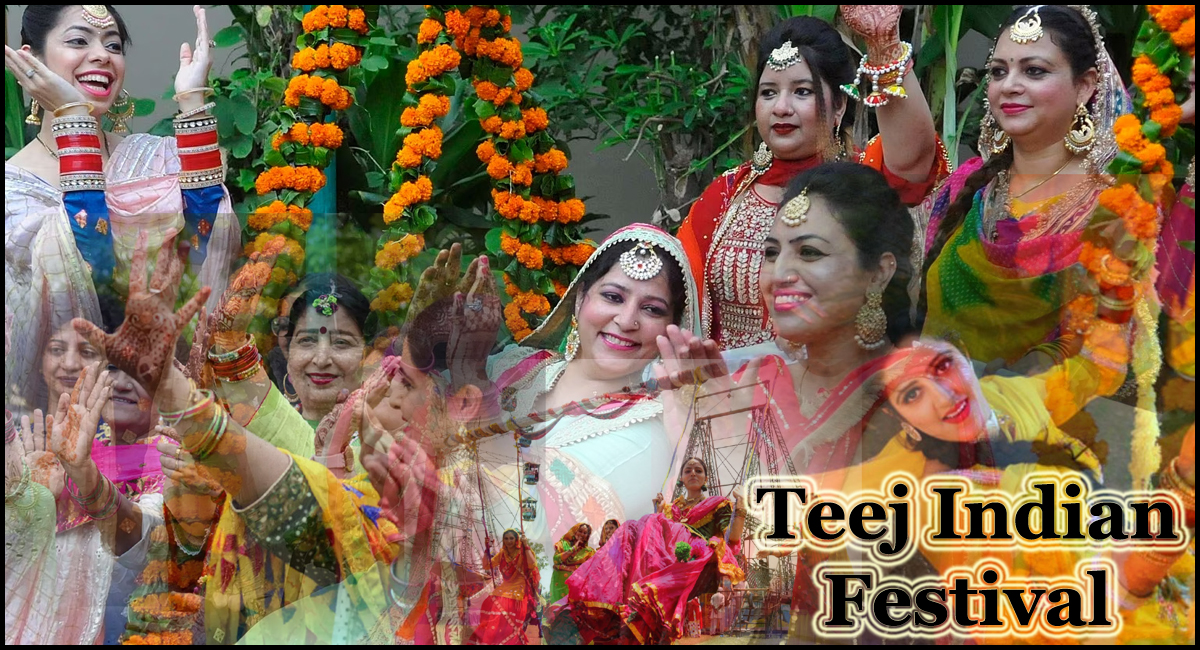
Teej Indian Festival: Celebrating Tradition, Culture, and Togetherness
Introduction
Teej, a vibrant and joyous Indian festival, holds a special place in the hearts of millions. It’s a celebration of tradition, culture, and togetherness that brings people closer, fostering a strong sense of unity and belonging. This article delves into the rich tapestry of Teej, exploring its significance, customs, rituals, and the indelible mark it leaves on Indian society.
The Origins of Teej Indian Festival
Teej’s origins can be traced back to ancient Hindu mythology, specifically the legend of Goddess Parvati and Lord Shiva. The festival is said to honor the reunion of the divine couple after a period of separation. This story symbolizes the triumph of love and devotion over adversity, making Teej a powerful testament to the enduring strength of relationships.
Types of Teej
Teej is celebrated in various forms across India, each with its unique rituals and customs. The three prominent types of Teej are:
1. Hariyali Teej
Hariyali Teej, also known as Shravana Teej, falls during the monsoon season. It’s marked by lush greenery, joyful dance, and women adorning themselves with green attire and jewelry. The festival highlights the arrival of rain and the prosperity it brings to the land.
2. Kajari Teej
Celebrated in the Bhadrapada month, Kajari Teej is observed by women seeking blessings for a bountiful harvest. Folk songs, sung in praise of the rain, dominate the festivities, and women often decorate their hands with intricate henna patterns.
3. Hartalika Teej
Hartalika Teej is commemorated with fasting, prayer, and unwavering devotion. Women pray to Goddess Parvati for marital bliss and a loving husband. The festival is an ode to the strength and resilience of women.
The Colorful Celebrations
Teej is a burst of color and merriment. Streets come alive with processions, music, and also dance performances. Women, adorned in bright traditional attire, gather to celebrate with songs, dances, and vibrant decorations.
Rituals and Traditions
Fasting: A Spiritual Offering
Fasting is a central aspect of Teej celebrations. Married and unmarried women observe rigorous fasts, abstaining from food and water. This act of devotion is also believed to bring prosperity, longevity, and happiness to their families.
Swing of Joy
Decorative swings, often adorned with flowers, are an integral part of Teej celebrations. Women, also young and old, take turns swinging on these beautifully adorned swings, adding an element of joy and playfulness to the festivities.
Applying Mehndi
Mehndi, or henna, also plays a crucial role in Teej celebrations. Women intricately decorate their hands and feet with henna patterns, also symbolizing love, beauty, and the bond of marriage.
Modern Significance
In contemporary times, Teej goes beyond its religious roots and holds a broader cultural significance. It’s a time when families come together, women bond over shared experiences, and communities strengthen their ties.
Conclusion
Teej, the vibrant Indian festival, weaves a beautiful tapestry of tradition, culture, and also togetherness. It’s a celebration that transcends generations, and also reminding us of the importance of love, devotion, and unity. As the colorful processions wind through the streets, and also the rhythmic beats of the dance fill the air, Teej stands as a testament to the rich heritage and enduring spirit of India.
Also Read – Makar Sankranti: Celebrating the Transition of Seasons and Spirit
FAQs- Teej Indian Festival
1. When is Teej celebrated in India?
Teej is celebrated at different times across India, Also with Hariyali Teej in the monsoon months, Kajari Teej in Bhadrapada, and Hartalika Teej in the Bhadrapada and Shravana months.
2. What is the significance of swinging during Teej?
Swinging during Teej symbolizes joy, playfulness, and the balance between life’s ups and downs.
3. Are only women allowed to participate in Teej celebrations?
While women primarily participate, Teej is a festival that brings families and communities together, involving everyone in the celebrations.
4. What is the importance of mehndi during Teej?
Applying mehndi during Teej signifies beauty, love, and the auspiciousness of marital relationships.
5. How has Teej evolved over time?
Teej has also evolved from a religious festival to a cultural celebration that fosters unity, togetherness, and a sense of belonging among communities.
Also Read – Hair Loss: Causes, Prevention, and Treatment

One thought on “Teej Indian Festival”